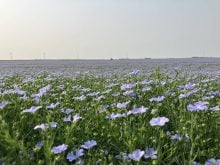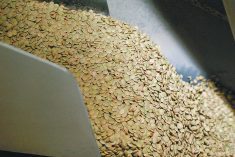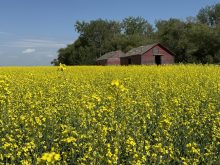SASKATOON — Pulse Canada is hoping to expand lentil demand in Europe.
The European Union and the United Kingdom import about 400,000 tonnes of the crop per year with Canada supplying about 100,000 to 140,000 tonnes on any given year.
That makes Europe Canada’s fourth largest customer behind India, Turkey and the United Arab Emirates.
Read Also

Crop Life hopeful Pest Management Regulatory Agency will cut red tape
The federal budget includes a line about removing cyclical reviews of pesticides on the market. That could free up the Pest Management Regulatory Agency to focus on other tasks
“We see opportunity for increased exports to that market as demand for lentils grows,” said Julianne Curran, vice president of market innovation with Pulse Canada.
“And that is trending in the right direction.”
Why it Matters: Canada is trying to diversify away from unpredictable markets like China and India.
Consumers in Europe are very familiar with lentils and have a strong, positive perception of the crop. It is a market that consumes both red and green lentils.
A 2024 study commissioned by Pulse Canada found that 30 per cent of consumers in the United Kingdom and Germany eat lentils weekly, and more than half view them as healthy and nutritious.
Curran said they are seen as a wholesome comfort food in Germany, while in the U.K. familiarity is on the rise due to the influence of its large Indian population, who regularly consume lentils in dahls and curries.
“We have that in our favour,” she said.
“In some of our other markets that we’re trying to grow consumption and utilization, there’s just less familiarity with lentils.”
Curran believes there is a big opportunity to grow demand in the packaged food sector with products such as snacks, baked goods and plant-based burgers.
Two-thirds of global lentil product launches come from Europe, led by the U.K., France and Germany.
There is also an opportunity to expand demand in Europe’s food service sector, which is trying to meet nutrition and sustainability goals.
“We’re doing some dedicated market diversification work in the region,” she said.
Pulse Canada has been conducting technical training with food service operators in Germany and the Netherlands. The focus has been on universities, health care facilities and corporate dining.
The organization has been able to share a recent life cycle assessment analysis showing Canadian lentils maintain a low carbon footprint even after accounting for transportation to Europe.
The goal of all this work is to boost overall lentil demand in the region. Pulse Canada has not set any volume targets for Europe because that depends on too many factors that are beyond the organization’s control.
But it is particularly keen on growing demand in value-added sectors because those companies tend to want the high-quality lentils that Canada produces.
Curran said Pulse Canada is also pursuing diversification opportunities in markets such as Mexico, South America and the Indo-Pacific region.
The goal is to explore value-added opportunities in those markets, such as ingredient processing and pet food manufacturing.
















